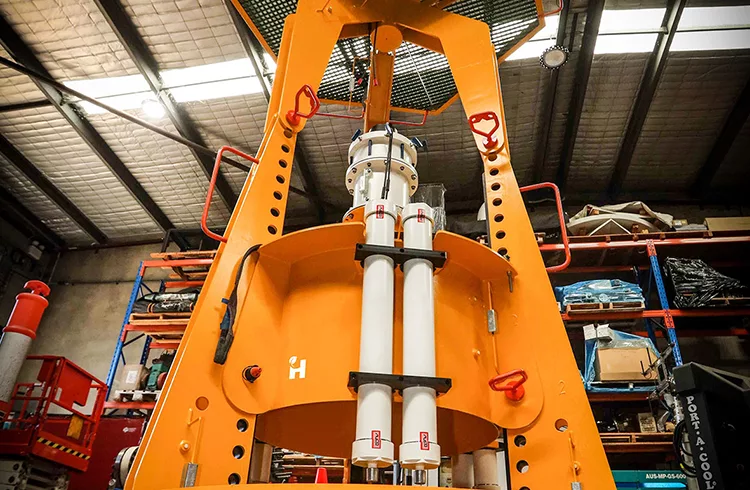Case Study / Smart buoy subsea remote monitoring
CUSTOMER
Oil + gas operator
Location
APAC
SECTOR
Energy
solution
Subsea monitoring
VERTICAL
Subsea assets
CUSTOMER
One of Australia’s largest oil and gas exploration and production companies engaged Harvest to develop a unique remote monitoring smart buoy solution to enable the transmission of live data trends from sensor readings from offshore subsea assets, viewed securely by its onshore operations team.
the problem
Traditional subsea monitoring and retrieval of data requires a suitably sized vessel with onboard remotely operated vehicles (ROVs) and a full suite of inspection personnel. Obtaining information from such methods can take weeks and months, leading the customer to rely on retrospective data when making critical operational decisions relating to repair, maintenance and asset integrity. This delay between inspections created the potential for issues to go unnoticed until the next inspection which could be scheduled at a much later date.
In addition to time and safety concerns in working on water, traditional monitoring methods also come with a significant expense and environmental cost to the customer. Recognising this and looking to improve efficiencies, the customer sought a way to future-proof its operations by adopting remote monitoring technology. A visit to inspect an individual asset would typically inherit a six-figure cost upwards of $125K per day, and the customer would have to undertake multiple visits through the year scheduled around available weather windows in order to inspect its assets and retrieve relevant data.
the solution
To meet the customer’s requirements, Harvest custom-built a remote subsea integrated monitoring solution utilising acoustic transfer to transmit data through the water from the monitoring structure on the seafloor to a buoy on the surface.
The buoy acts as a modem to communicate this information back to shore. The data is securely transmitted via the web, providing stakeholders with real-time access to the information they need in any location at any time. This allows the customer to receive live data from the seafloor to facilitate immediate decision-making.
Harvest employed its proprietary Nodestream™ technology to transmit this data at a fraction of the bandwidth typically required, and with low latency. Harvest designed a self-powered system to operate for a long period of time without the need for ongoing in-person inspection and maintenance, and the solution will alert onshore headquarters if there is major change in sensor readings so they can intervene on an informed basis.
Harvest manufactured this solution in partnership with two other Western Australian businesses, Ausco Products and Land and Sea Services, who provided the engineering design and construction and electrical services for the construction of the structure.
the result
The development of a subsea remote monitoring solution that transmits live data from the seafloor to an onshore location alleviates the customer’s challenge of relying on retrospective data for critical operational decisions.
With this technology, the customer can receive remotely recorded measurements and monitor the status of its asset in real time. The data can be viewed live through a secure web portal and analysed by key stakeholders.
The system is also capable of alerting onshore headquarters when there is a significant change in sensor readings. This allows the customer to respond quickly in an emergency or closely monitor the situation until intervention is deemed required.
Having dynamic, live information instead of retrospective data enables the customer to have a better insight into the condition of its assets, providing them with enhanced capabilities at a significantly reduced cost. Instead of multiple visits to an asset for data capture at a cost of at least $250k per visit and waiting on weather conditions, the customer’s associated operational costs are reduced by more than 50%. Implementing a technology solution, rather than relying on traditional inspection methods, also reduces the customer’s carbon footprint by up to 90%.
More Case Studies
Moving from traditional subsea monitoring to cost-efficient remote monitoring solutions.
Enhancing remote operational awareness with secure remote livestreaming from DOF Subsea's "Skandi Darwin".
Enhancing maritime operations with secure onboard CCTV livestreaming for Vallianz.
Redefining marine surveys using remote inspection technology wth Lloyd's Register.
24/7 Remote technical support with ultra-low bandwidth technology.

